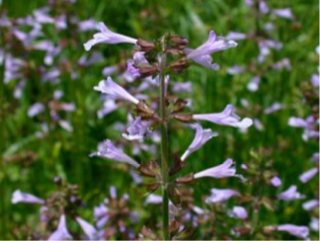Be the Envy of Your Neighborhood - Get Inspired!
- Donna Merrill
- Feb 10, 2021
- 3 min read

Many of us live in homes surrounded by lawn. We have learned to avoid fertilizers and pesticides that turn our ponds scummy and threaten the health of our children and pets. But yet, we are accustomed to that neat and tidy platter of green. It’s an aesthetic that is so ingrained that we think anything perceived as “messy” risks a backlash. Afterall, neighbors can get irritated if things don’t “look good”. But here’s the rap—we’re in deep trouble in terms of fundamentals. Our landscapes are in decline. We already suffer from fragmentation, invasives, deer browse, and herbicides. Maybe the time has come to consider a new aesthetic not dependent on chronic mowing which turns our properties into dead zones for wildlife. What can we do? PLANT FLOWERS!! Flowers were designed by plants to attract and accommodate the animal that 80% of them depend on for survival—bees. “But wait...” you say, “Don’t bees sting? Why would I want to attract bees to my yard?” Because, if you plant NATIVE flowers, you’ll attract NATIVE bees. Native bees have no interest in stinging you. Except for the bumblebee, they are solitary creatures with no hive to defend. Only female native bees have the potential to sting and 1⁄4 of those females have a stinger that is so ineffective that it can’t penetrate skin. Moreover, if you happened to squish a female native bee and get a sting, there is no known allergic reaction in humans. Thanks to the work of Brett Gilman, a June 2020 Wilton (CT) High School graduate, we have a guide for creating a flowering lawn substitute that will make your neighbors envious. Brett’s passion is eco-landscaping and habitat restoration for pollinators. Inspired by Thomas Rainer and Claudia West’s book Planting in a Post Wild World, he has developed an aesthetically pleasing palette of native flowering plants, grasses, and ground cover by thinking structurally and designing with large groupings of plants that bloom in early, mid, and late season. After working as Wilton Land Conservation Trust’s field ranger and open space manager this past summer, Brett created a landscape plan for a biodiversity sanctuary on a protected open space parcel in the heart of the Wilton Pollinator Pathway. His plantings provide overlapping bloom times, differing flower shapes and heights, and stunning coloration. By changing the number of plants used in a grouping, a homeowner can replace a section of lawn as small as 10’ x 10’ or as large as 1⁄2 acre especially if shrubs are added as larval hosts for butterflies (see Doug Tallamy’s Bringing Nature Home). Here are some of Brett’s plant choices for native plants to use in that sunny space of your yard that is now lawn:
Spring combo:
Left to Right - Lyreleaf sage (Salvia lyrata), Foxglove beardtongue (Penstemon digitalis) and Hairy beardtongue (Penstemon hirsutus)
Mid-summer combos:

#1 Rattlesnake master (Button eryngium); Anise hyssop (Agastache foeniculum); Pale Coneflower (Echinacea pallida)

#2 Spotted beebalm (Monarda punctata); Black-eyed Susan (Rudbeckia hirta)
Fall combos:

Early goldenrod (Solidago juncea) and Sweet goldenrod (Solidago odora)

Smooth aster (Symphyotricum laeve) and White heath aster (Symphyotricum ericoides)
Grasses:

Prairie dropseed (Sporoabolis heterolepsis) and Little bluestem (Schizachyrium scoparium)
Ground cover:

Fragaria virginiana (common strawberry)
It’s up to each of us to inspire others to think differently about our outdated lawn paradigm. The decision to change what you do has to be a conscious one. But imagine the impact if, by growing flowers instead of turf, we alter the perception of beauty from a lawn clipped and mowed into sterile perfection to one that is an array of flowers that bloom from spring until frost.









